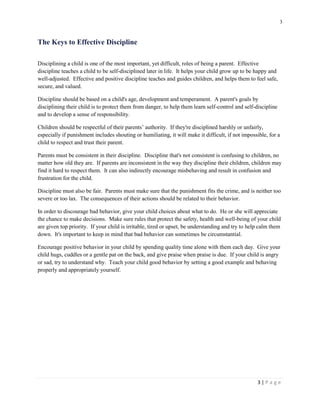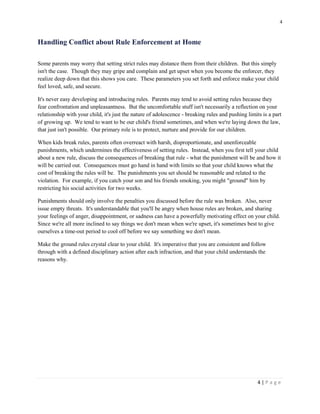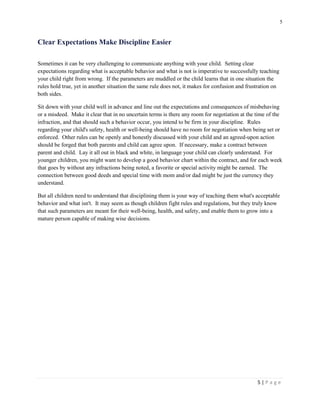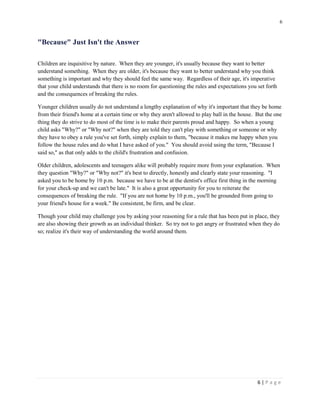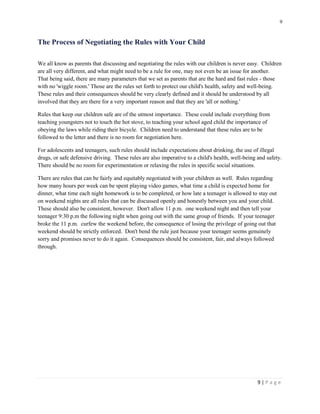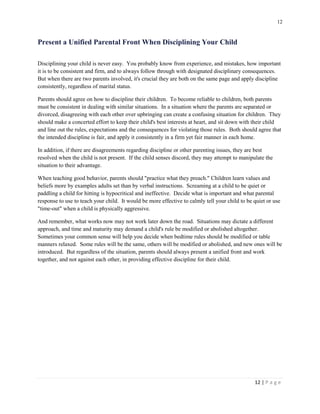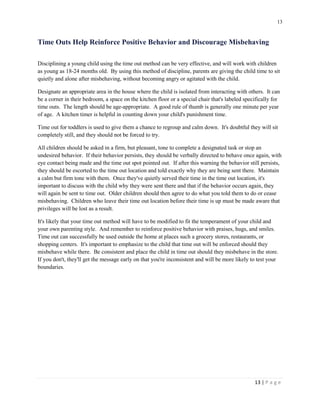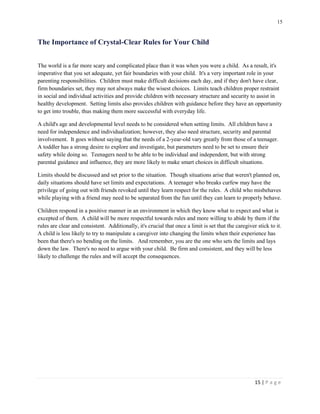This document discusses keys to effective discipline for children. It emphasizes the importance of consistency in discipline, clear expectations, explaining the reasoning for rules, and following through with predetermined consequences. Discipline should be tailored to a child's age and development, teach self-control, and make the child feel safe and valued. Parents must present a united front and enforce rules fairly and proportionately, without harshness, to earn a child's respect and trust.


